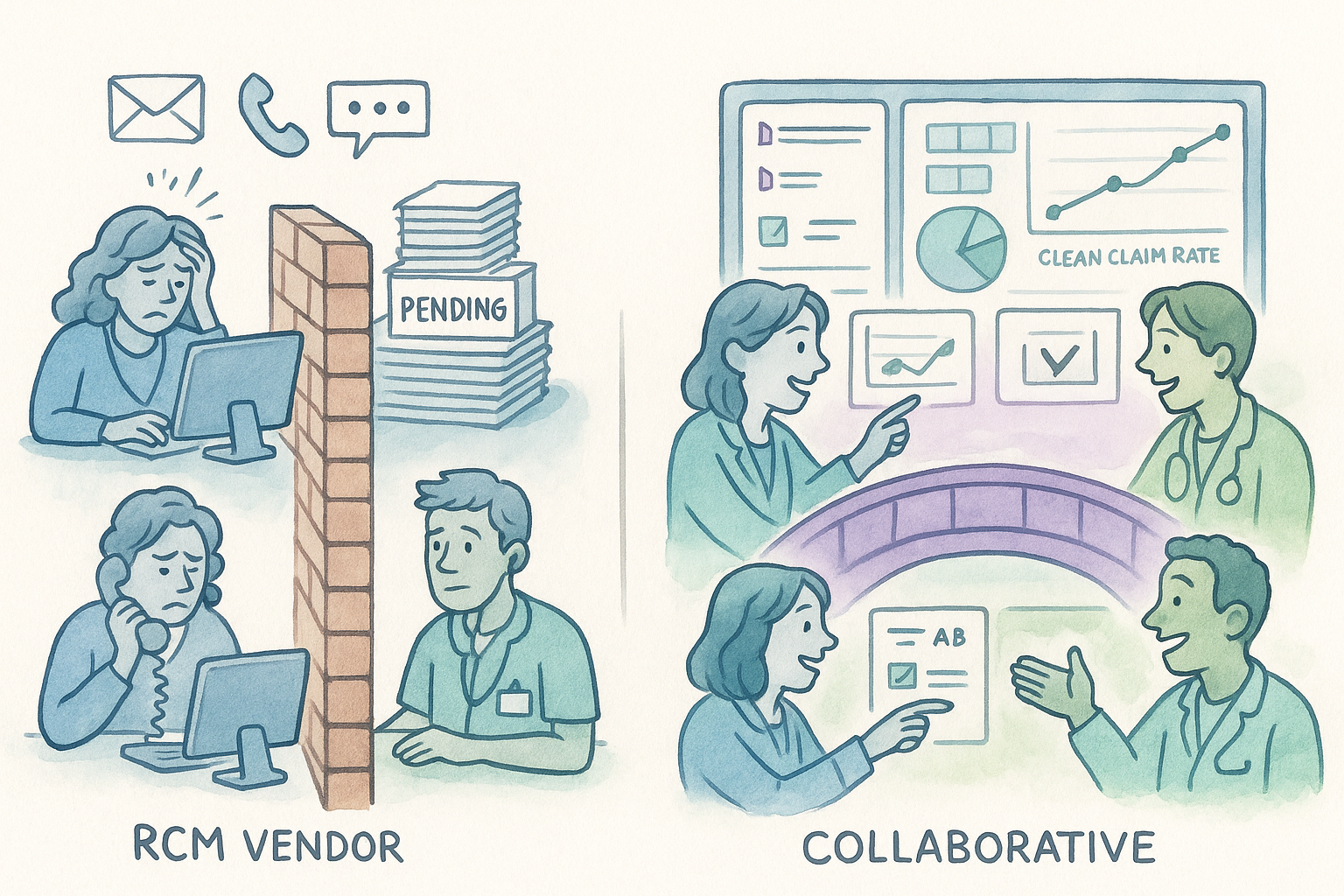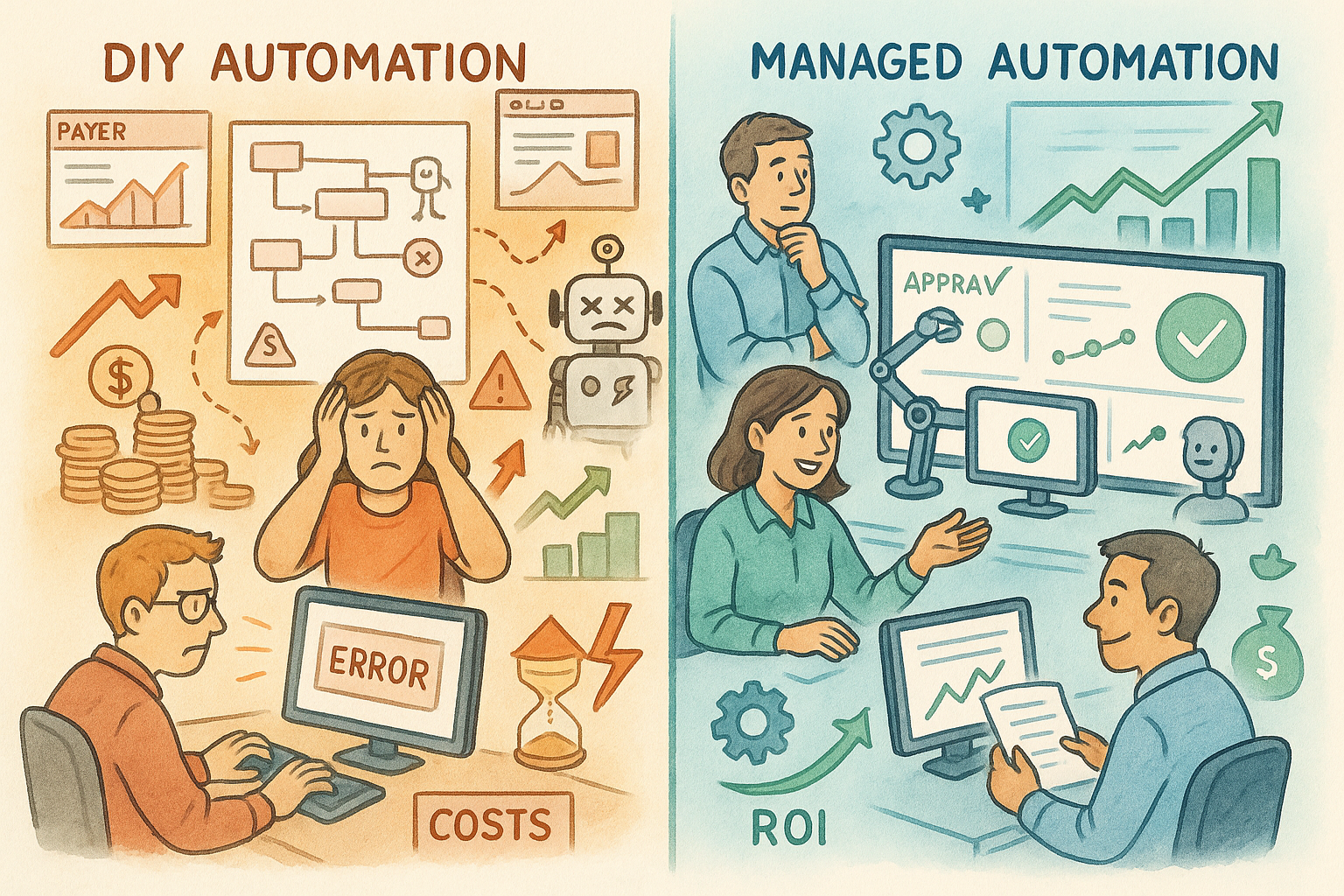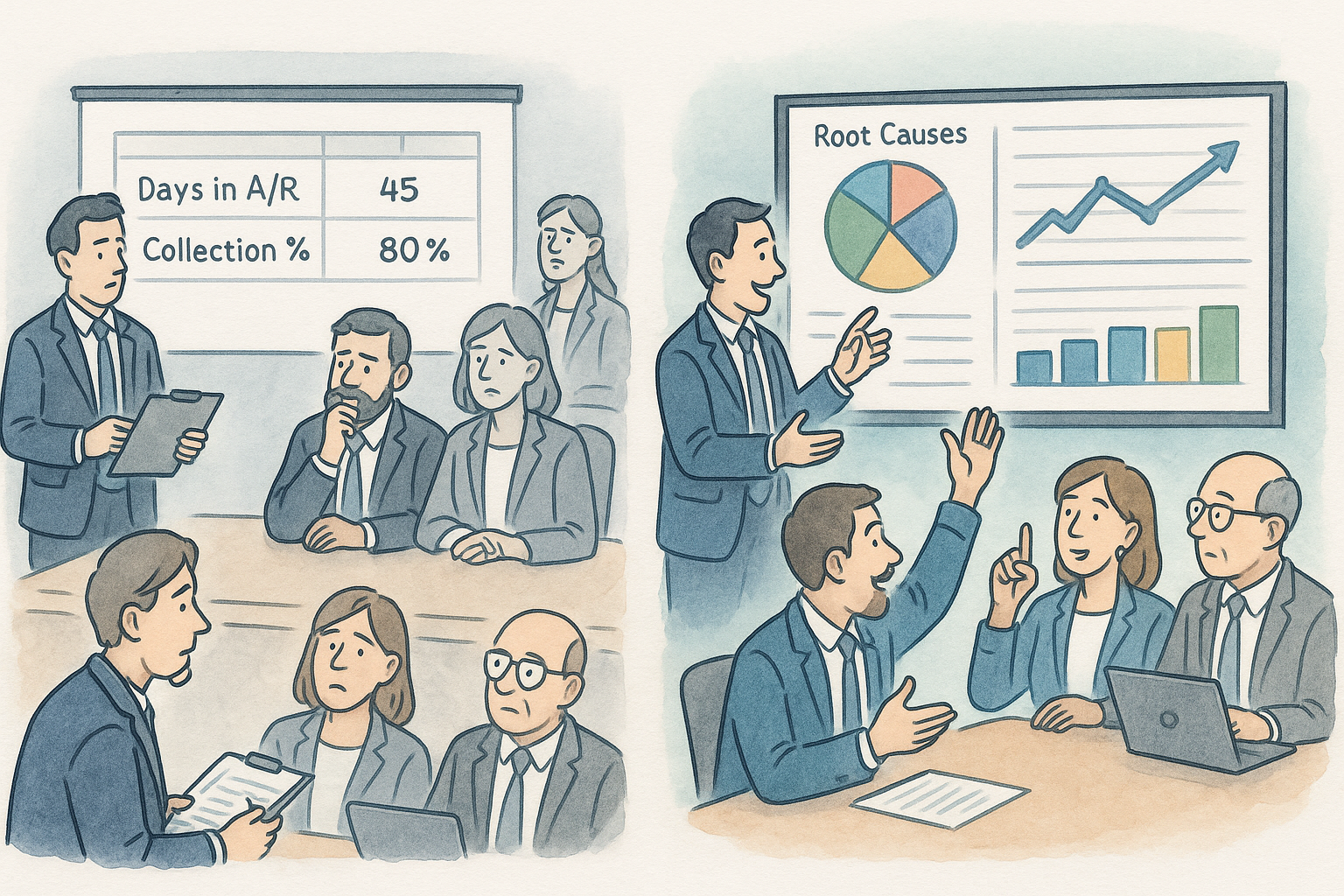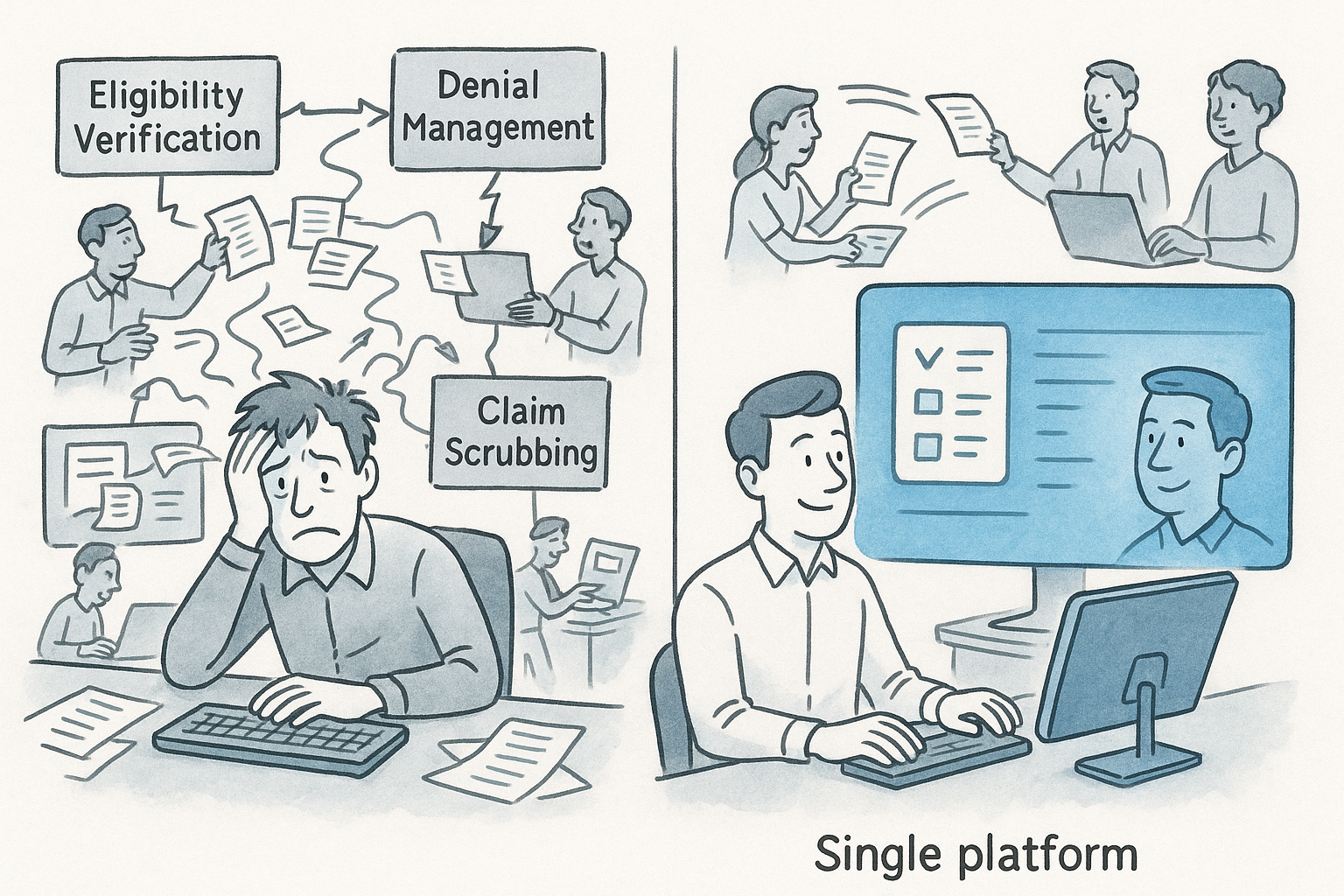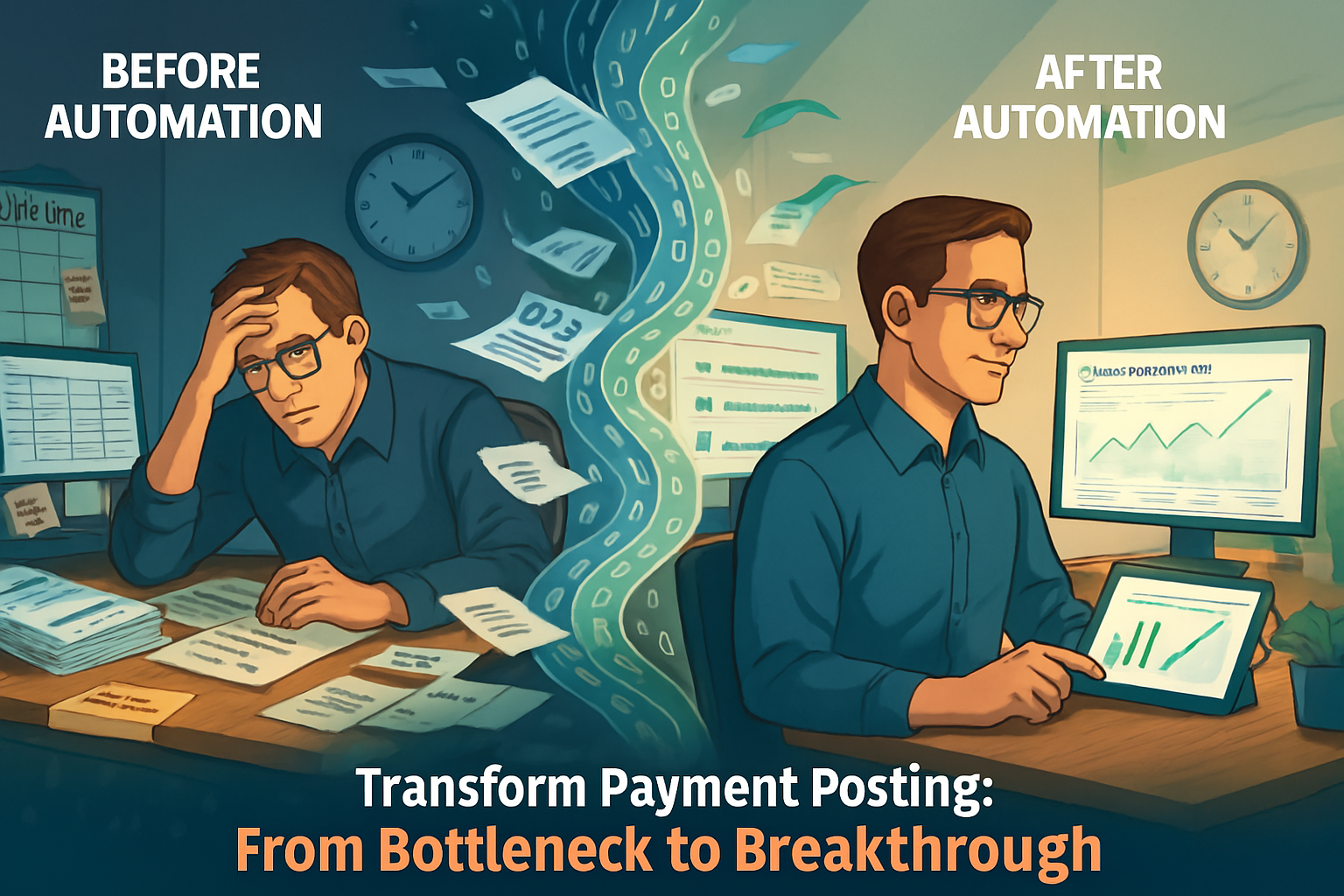The traditional relationship between healthcare providers and their revenue cycle management vendors has often resembled a black box. Providers send claims and information into the box, payments eventually emerge, and monthly reports provide limited visibility into what happened in between.
This model worked adequately in simpler times, but today’s complex healthcare environment demands something more: true collaboration. Leading RCM vendors are discovering that shared technology platforms fundamentally change relationship dynamics, creating more productive partnerships and better financial outcomes for both parties.
The Traditional Divide: Challenges of the Vendor-Client Relationship
Before exploring collaborative solutions, it’s worth examining why the traditional RCM vendor relationship often creates friction:
Information Asymmetry
In conventional relationships, RCM vendors have significantly more information about the revenue cycle than their clients:
- Vendors see detailed denial codes and payer messages
- Vendors track claim status across the adjudication process
- Vendors observe patterns across multiple claims and payers
Meanwhile, providers have critical information that vendors need:
- Clinical context that might justify additional documentation
- Patient relationship details that affect collection approaches
- Practice preferences for financial policies and exceptions
This information asymmetry creates inefficiencies, with each side making decisions without complete context.
Misaligned Incentives
Traditional arrangements can inadvertently create competing incentives:
- Vendors may focus on metrics in their service level agreements rather than overall financial performance
- Providers may implement front-end changes without understanding the impact on billing outcomes
- Staff on both sides may optimize for their own efficiency rather than end-to-end results
As one practice manager noted: “Sometimes it felt like we were working against our billing company rather than with them. We’d make changes to improve patient experience, only to discover months later that it created billing problems.”
The Communication Tax
Perhaps the most significant burden in traditional relationships is what we call the “communication tax”—the extraordinary amount of time spent coordinating rather than doing:
- Emails seeking additional information for denials
- Calls to discuss specific challenging claims
- Spreadsheets tracking outstanding items requiring provider action
- Status update meetings to review work in progress
One RCM operations leader calculated that their staff spent over 30% of their time on coordination activities rather than actual revenue cycle work. For providers, the burden was even higher, with practice managers sometimes spending 15-20 hours per month communicating with their RCM vendor.
Breaking Down Walls: What True Collaboration Looks Like
Forward-thinking RCM vendors are implementing collaborative platforms that fundamentally change these dynamics. Here’s what characterizes these new relationships:
Shared Visibility
Instead of periodic reports, collaborative platforms provide continuous, shared visibility into the revenue cycle:
- Providers gain real-time insight into claim status and denial reasons
- RCM staff and provider staff see the same data simultaneously
- Both sides can track progress on issues requiring resolution
- Performance metrics are transparent to all stakeholders
This shared visibility eliminates the information asymmetry that plagues traditional relationships. As one practice administrator described it: “For the first time, we’re all looking at the same information. There’s no more ‘us versus them’ because we’re all seeing the same challenges and opportunities.”
Unified Workflow
Beyond shared visibility, collaborative platforms enable unified workflows that span organizational boundaries:
- Tasks can be routed to the appropriate person regardless of employer
- Work queues can incorporate items requiring action from either side
- Accountability is clear through explicit ownership and due dates
- Status updates happen automatically through the platform, not via email
This approach dramatically reduces the coordination overhead that consumes so much time in traditional relationships.
Contextual Communication
When communication is necessary, collaborative platforms make it more effective by providing:
- Claim-specific messaging tied directly to the account in question
- Attached documentation and images to clarify issues
- Historical context of previous interactions
- Notifications that ensure timely response
This contextualized communication eliminates the confusion and delays that occur when discussions happen across multiple channels (email, phone, fax) without clear reference to specific claims or accounts.
Task Coordination: Eliminating the Back-and-Forth
One of the most immediate benefits of collaborative platforms comes from streamlined task coordination. Here’s how this transformation typically plays out:
Traditional Process for Missing Documentation
- RCM staff identifies documentation gap
- Staff sends email to practice manager
- Practice manager forwards to appropriate provider
- Provider responds, sometimes asking clarifying questions
- Practice manager forwards response to RCM
- If documentation is still insufficient, the cycle repeats
- Once resolved, RCM staff must reorient to the account days later
Average Resolution Time: 7-14 days
Collaborative Platform Approach
- RCM staff identifies documentation gap
- Staff assigns task directly to provider with specific request
- Provider receives notification and responds within platform
- All context and history remain attached to the account
- Resolution automatically advances the workflow
Average Resolution Time: 1-3 days
This efficiency improvement doesn’t just accelerate cash flow—it also reduces the frustration and relationship friction that comes from prolonged back-and-forth communication.
Transparency as Trust-Builder: Changing the Relationship Dynamic
Perhaps the most profound impact of collaborative platforms is how they transform the fundamental dynamic between RCM vendors and healthcare providers.
From Scrutiny to Partnership
In traditional relationships, provider-vendor interactions often center around scrutiny and justification:
- Providers questioning why certain claims aren’t paid
- Vendors explaining performance metrics and exceptions
- Both sides focusing on what’s gone wrong rather than improvement opportunities
Collaborative platforms shift the focus from accountability questions to joint problem-solving:
- Both sides see the same issues in real-time
- Transparency eliminates suspicion about hidden problems
- Conversations focus on solution development rather than status updates
- Mutual challenges (like payer behavior) become more apparent
As one RCM leader observed: “When our clients can see exactly what we’re doing every day—not just in reports, but in the actual work—the nature of our conversations completely changes. We spend our meeting time on strategy rather than status.”
Building Trust Through Accessibility
Collaborative platforms also build trust through ongoing accessibility:
- Providers can check status anytime without requesting reports
- Questions can be asked and answered asynchronously
- Progress is visible without scheduled update meetings
- Escalation paths are clear when issues require attention
This accessibility creates confidence that issues aren’t being hidden or ignored—a common concern in traditional vendor relationships.
The Approval Bottleneck: Streamlining Key Decisions
Every revenue cycle includes decision points that require provider input or approval. These moments often become significant bottlenecks in traditional relationships:
- Write-off decisions above certain thresholds
- Patient payment plan exceptions
- Appeal strategies for complex denials
- Decisions to pursue or abandon challenging claims
Collaborative platforms address these bottlenecks by:
- Presenting approval requests with complete context
- Enabling mobile-friendly review and action
- Tracking pending decisions with appropriate reminders
- Documenting approval history for compliance and audit purposes
One medical group reduced their average approval time from 9 days to less than 24 hours after implementing a collaborative platform. This acceleration not only improved cash flow but also prevented denials related to timely filing limits.
Shared Accountability: Aligning Incentives Through Common Platforms
Collaborative platforms enable a shift toward shared accountability by making performance drivers visible to all parties:
Clear Cause-and-Effect Relationships
When all stakeholders work in the same environment:
- Providers can see how front-end decisions affect billing outcomes
- RCM staff can identify patterns that originate in clinical or administrative processes
- Both sides can track the impact of process changes over time
This visibility naturally aligns incentives as the relationship between actions and outcomes becomes clearer.
Joint Performance Metrics
Collaborative platforms enable more sophisticated, shared performance metrics:
- End-to-end measurements from scheduling to payment
- Attribution of results to appropriate responsible parties
- Balanced metrics that consider both efficiency and effectiveness
- Trend analysis that guides joint improvement initiatives
These comprehensive metrics replace the siloed approach where providers and vendors each optimize for different outcomes.
Real-Time Troubleshooting: Solving Problems as They Arise
One of the most valuable aspects of collaboration is the ability to address issues before they become costly problems:
Immediate Issue Identification
Collaborative platforms enable:
- Real-time alerts for unusual patterns or exceptions
- Early warning of potential denials based on similar claims
- Immediate notification of payer policy changes
- Quick identification of submission errors or omissions
Collaborative Problem-Solving
When issues arise, joint visibility allows:
- Simultaneous review of the same information by both parties
- Real-time clarification of questions
- Shared development of response strategies
- Immediate implementation of corrections
A billing company manager described the impact: “Before, we’d discover a documentation issue after receiving denials, sometimes weeks after submission. Now we can identify potential issues before claims go out and work with the provider to address them immediately. It’s changed our denial rate dramatically.”
Case Study: The Collaborative Platform Impact
A revealing case study comes from a specialty RCM vendor that implemented a collaborative platform with 18 orthopedic practices:
Before Implementation:
- Average Days in A/R: 43
- Clean Claim Rate: 84%
- Denial Rate: 12%
- Provider Staff Time on RCM Coordination: 64 hours/month
- Client Satisfaction Score: 3.6/5
After Implementation (12 months):
- Average Days in A/R: 31 (28% improvement)
- Clean Claim Rate: 92% (10% improvement)
- Denial Rate: 7% (42% improvement)
- Provider Staff Time on RCM Coordination: 22 hours/month (66% reduction)
- Client Satisfaction Score: 4.7/5 (31% improvement)
Beyond these metrics, the vendor reported significant qualitative improvements:
- Contract renewal rate increased from 78% to 94%
- Service expansion opportunities increased by 40%
- Staff turnover decreased on both the vendor and provider sides
- The sales team began winning competitive bids based on the collaborative platform differentiator
The vendor’s CEO summarized the transformation: “We went from being seen as a necessary service provider to being viewed as an integral part of our clients’ financial operations. It fundamentally changed how they value our relationship.”
Implementation Steps: Transitioning to a Collaborative Model
Shifting to a collaborative approach requires careful planning, particularly with existing clients accustomed to traditional relationships. Consider this phased implementation strategy:
Phase 1: Foundation Building
- Assess current communication patterns and pain points
- Identify high-value collaboration opportunities
- Select appropriate technology platform
- Develop internal processes for collaborative workflow
Phase 2: Pilot Implementation
- Choose receptive clients for initial implementation
- Focus on specific high-friction processes
- Provide thorough training for both vendor and client staff
- Establish baseline metrics to measure impact
Phase 3: Workflow Integration
- Expand from specific processes to comprehensive workflow
- Integrate with client systems where appropriate
- Refine notification and escalation protocols
- Develop standardized approaches for common scenarios
Phase 4: Relationship Transformation
- Restructure regular meetings around strategic topics
- Implement shared performance dashboards
- Create joint process improvement initiatives
- Develop success stories to share with prospective clients
Throughout implementation, maintain focus on value creation for both parties—not just efficiency, but effectiveness in achieving shared financial goals.
Overcoming Resistance to Collaboration
Despite its benefits, collaborative approaches sometimes face resistance. Here’s how to address common concerns:
From Provider Clients:
- Concern: Transparency will reveal problems we’d rather not see
- Response: Issues don’t disappear when hidden; they just become more costly to fix
- Concern: Our staff doesn’t have time for another system
- Response: The platform reduces total time spent while redistributing responsibilities more effectively
- Concern: We’re paying you to handle this; why should we be involved?
- Response: Certain decisions require provider input by necessity; collaboration makes these touchpoints more efficient, not more numerous
From Internal Teams:
- Concern: Clients will micromanage our work
- Response: Transparency actually reduces micromanagement by building trust and eliminating the need for constant status checks
- Concern: We’ll be expected to fix problems we don’t control
- Response: Clear attribution of responsibilities within the platform actually makes it easier to identify root causes outside your control
- Concern: Our “special sauce” processes will be exposed
- Response: Your value comes from expertise and execution, not information asymmetry
Conclusion: Collaboration as Competitive Advantage
In today’s challenging healthcare environment, the RCM vendors who thrive will be those who transform their client relationships from transactional to collaborative.
Shared technology platforms make this transformation possible by:
- Eliminating the communication tax that consumes valuable time
- Creating transparency that builds trust and aligns incentives
- Enabling unified workflows that cross organizational boundaries
- Facilitating real-time problem-solving rather than retrospective analysis
The result isn’t just more efficient operations—it’s a fundamental shift in how healthcare providers perceive and value their RCM partners. In a market where service commoditization and pricing pressure are constant threats, this relational differentiation creates sustainable competitive advantage.
As one RCM leader concluded: “We used to worry about our clients comparing us to competitors solely on price or basic metrics. Now they tell us, ‘We couldn’t possibly switch because no one else works with us the way you do.’ That’s the power of true collaboration.”
Lockbox enables seamless collaboration between RCM vendors and their healthcare clients through our integrated platform. Learn how we can transform your client relationships at www.lockboxai.com.
